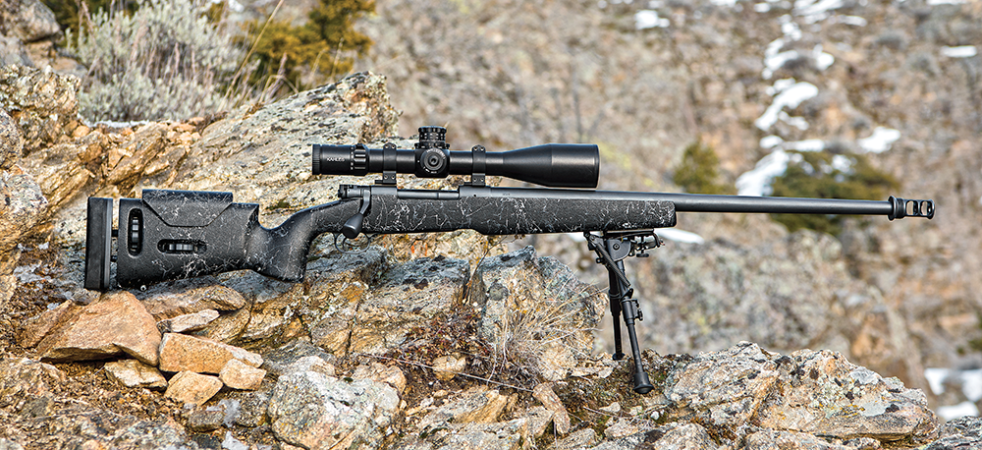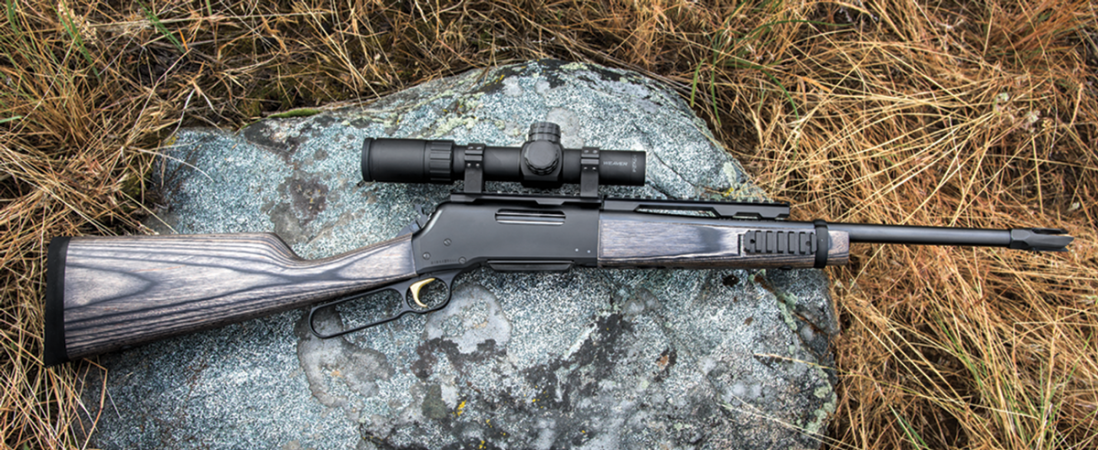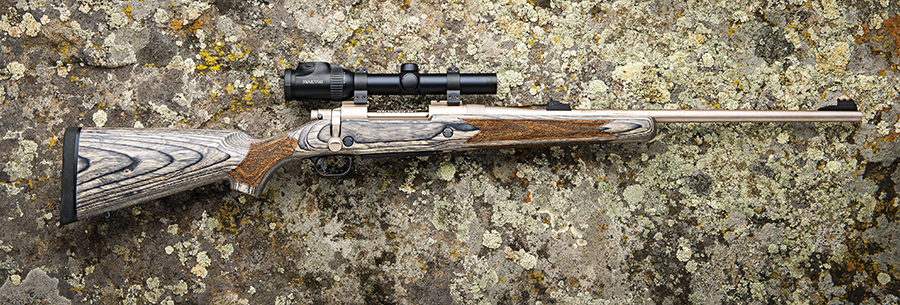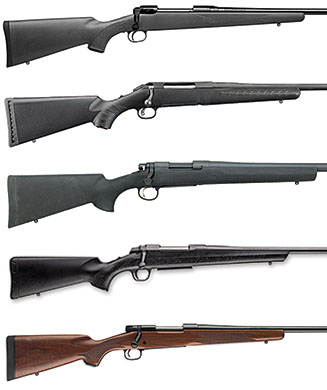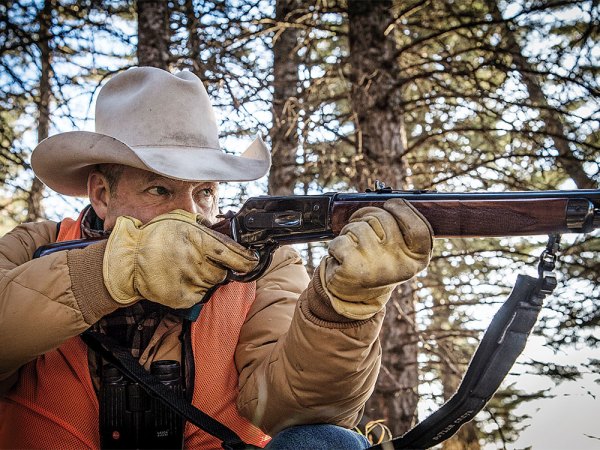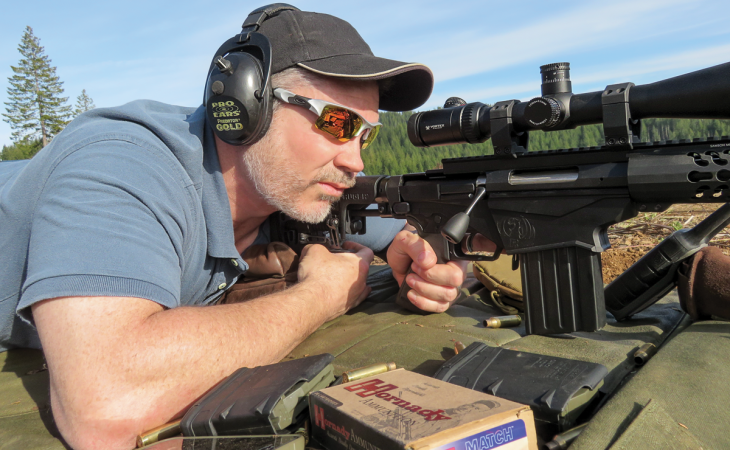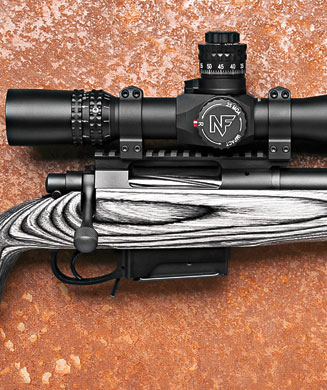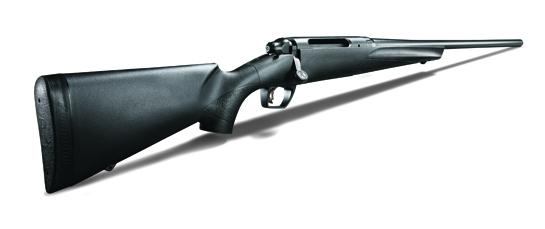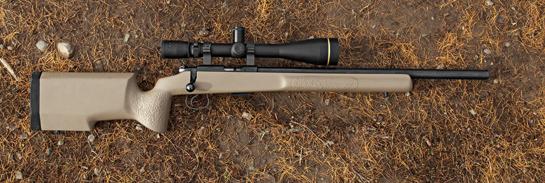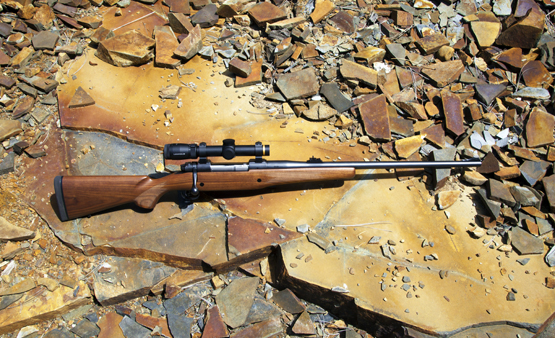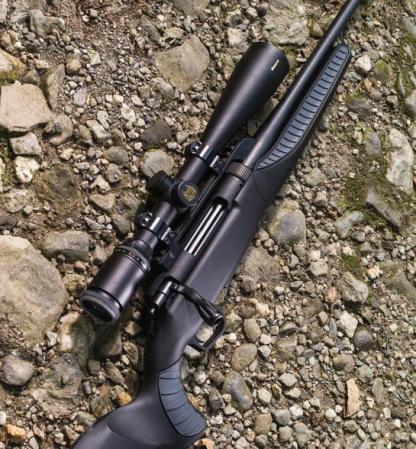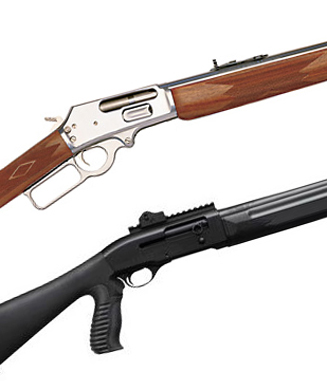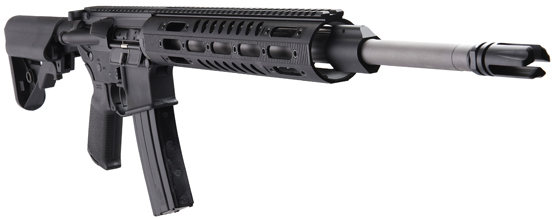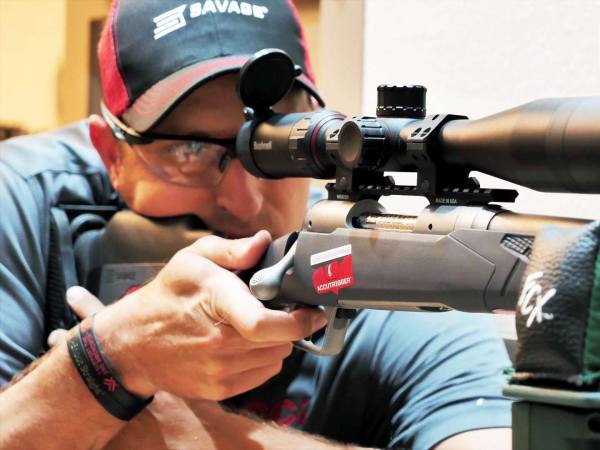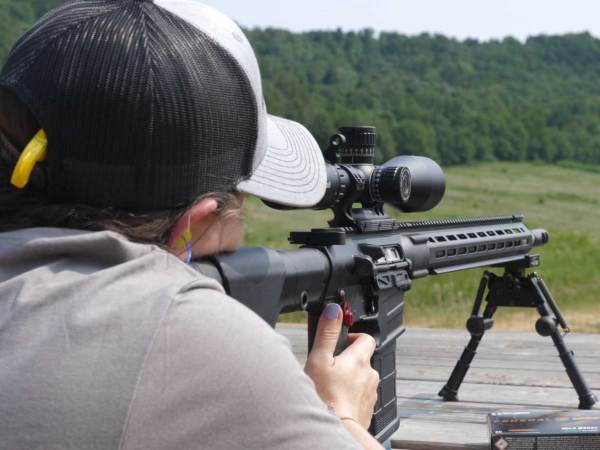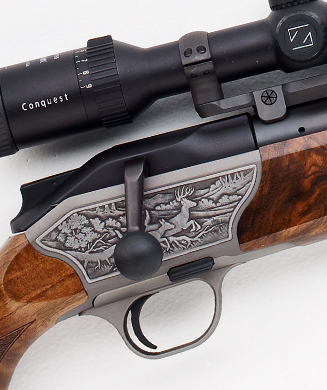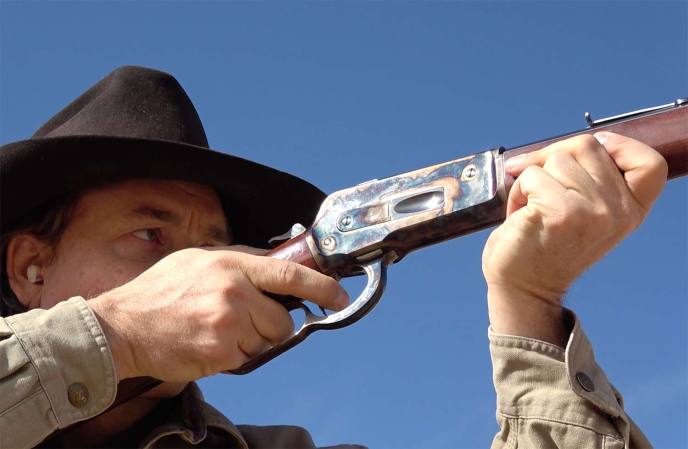We may earn revenue from the products available on this page and participate in affiliate programs. Learn More ›
The Marlin 1895 SBL in .45/70 Gov’t is the first rifle out of the gates since Marlin was acquired by Ruger, and after using one for the last several weeks and taking it hunting, I am breathing a huge sigh of relief. Ruger has done right by the beloved brand. And not only has Ruger rescued Marlin from the wreckage of the Remington bankruptcy but based on what I’ve seen so far, it is making the best lever-actions in Marlin’s history. Put simply, Ruger has successfully reincarnated Marlin as a modern gun company.

Before diving into the behind-the-scenes details, here’s a look at the initial Model 1895 being produced at Marlin’s new home in Mayodan, North Carolina.
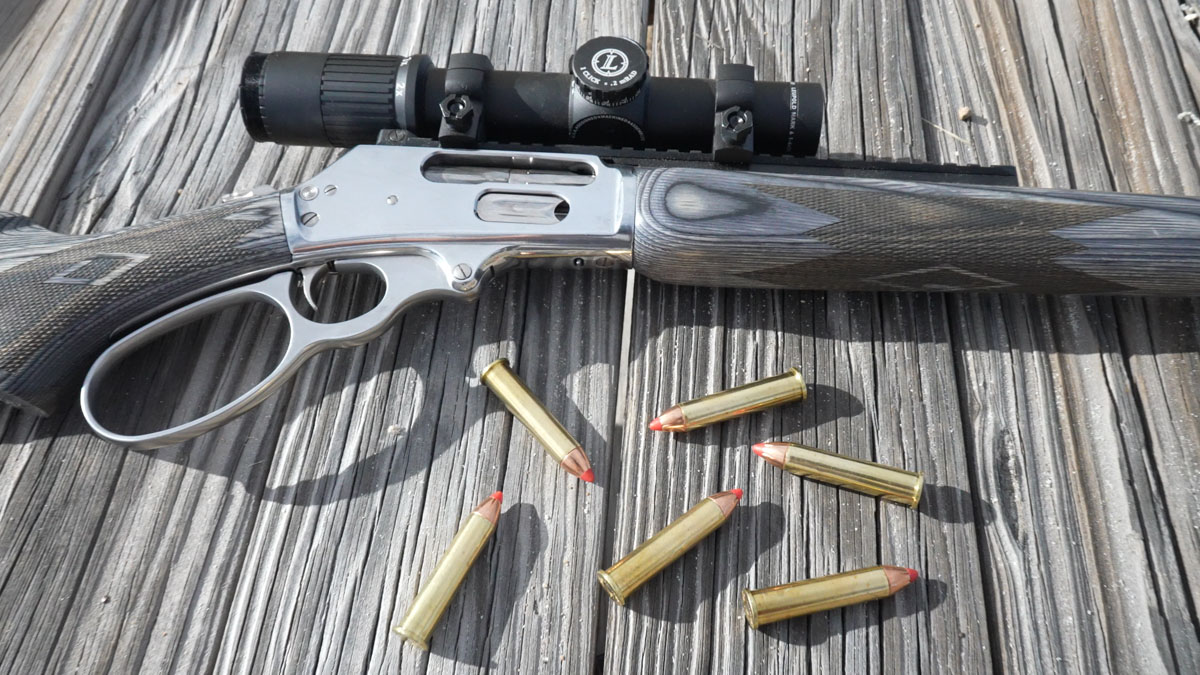
Marlin 1895 SBL .45/70 Gov’t Specs
- Receiver: Forged, heat treated, and polished 416 stainless steel
- Barrel: Cold-hammer forged 410 stainless steel
- Barrel length: 19 in.
- Capacity: 6-shot tubular magazine (6+1)
- Stock: Black and gray laminate
- Sights: Adjustable ghost ring rear and Hi-Viz front sight with tritium insert
- Scope base: Picatinny rail
- Bolt: Nickle plated with spiral fluting
- Loop: Oversized, polished 416 stainless steel
- Trigger: 6 pounds, 7 ounces
- Weight: 7 pounds, 4 ounces
- Overall length: 37 ¼ in.
- Barrel twist: 1:20 inches
- Muzzle: Threaded 11/16”-24
- Safety: Crossbolt
- Availability: About 1,000 units shipping ASAP with more in the pipeline
- MSRP: $1,399
Model 1895 Upgrades
While Marlin will continue to exist as a stand-alone entity, there’s no doubt that Ruger has put its mark on the rifle. Visually, you see this in several places. There’s the prominent “Marlin • Mayodan, NC • USA” along the barrel; Mayodan is the factory site where Ruger makes its AR rifles and other firearms. The serial numbers start with RM, for “Ruger Made,” though they could also stand for “Revived Marlin.” The proof mark on the barrel has an “R” in it. Also, the trademark Marlin bullseye on the underside of the stock is Ruger red, though Marlin history buffs know that red was the original Marlin color, so actually this is a return to the company’s roots.
From an aesthetic standpoint, all the engraved text is attractive and well executed. In fact, in terms of visual impact, these new 1895s are among the best-looking Marlins ever made.
But let’s get back to the upgrades for the moment. Internally, Ruger has done some great things to improve how the Marlins are built.
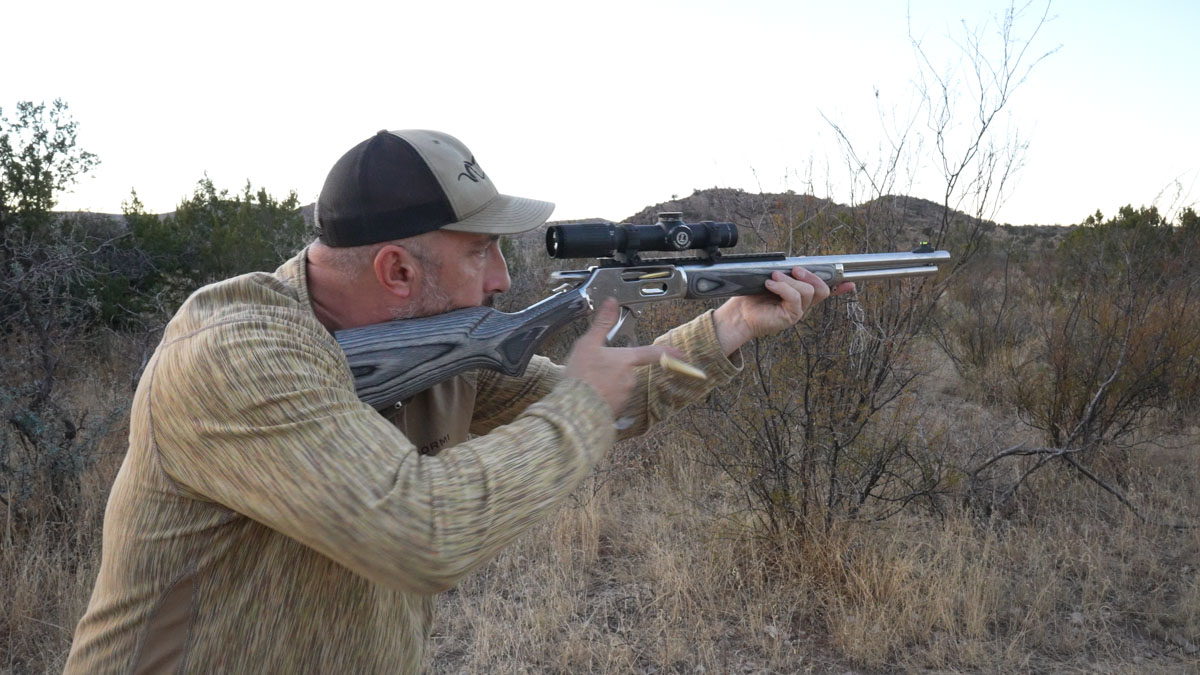
Marlin 1895 SBL Manufacturing Improvements
Marlin’s engineers have completed the company’s transition from an old-time rifle maker to a thoroughly modern manufacturer, and the quality of these rifles reflects that.
For example, when Marlin now cuts the chambers on the Model 1895, it does so in just two passes. Previously, chambering these lever guns required several machining cuts. This is significant, because every time you make a cut you introduce a certain amount of tolerance slop. The more passes, the more those tolerances can stack, potentially degrading accuracy and performance. These new chambers are much more precise.
For the first time, Marlin is cutting some parts via wire EDM. This advanced type of machining uses a thin electrically charged wire that makes exact and smooth cuts. The notches on the hammer that engage the sear are EDM cut, resulting in a very crisp trigger break with none of the grit, creep and overtravel that is often found on lever-action rifles.
Marlin is also heat treating the forged stainless-steel receivers before machining them. It is cheaper to machine the pieces and heat treat them after—it is easier to cut the metal prior to the process—but heat treating relieves stress on the metal potentially causing it to alter shape. If the dimensions change after you’ve machined the metal, you can get warping and tolerance stacking again. By heat treating first, Marlin can hold these guns to much tighter specs.
Tight Metalwork Fit and Finish
One only needs to look at the fit between the trigger guard plate and receiver on these new Marlins to observe these tighter tolerances. I own about a dozen Marlin lever-actions and invariably there is a noticeable and sometimes inconsistent gap where the trigger guard plate fits into the bottom of the receiver. This is one of those connections that required hand-fitting and filing by Marlin gun makers in the past. On my new 1895 SBL and on the other Ruger-made Marlins I’ve inspected, the fit between those pieces is nearly perfect. While this is visually pleasing, having pieces that fit this way also translates to a rifle that runs better and more reliably.
Older Marlins often needed a shim between the barrel and receiver to get them to time correctly. (Those shims are like very thin washers that come in different thicknesses.) No more. The precise machining on the barrel and receiver allows them to be screwed together, be torqued to spec, and line up perfectly.
To augment the rifle’s visual flair, Marlin nickel plated both the loading gate spring and the bolt, which they adorned with a spiral fluting pattern.
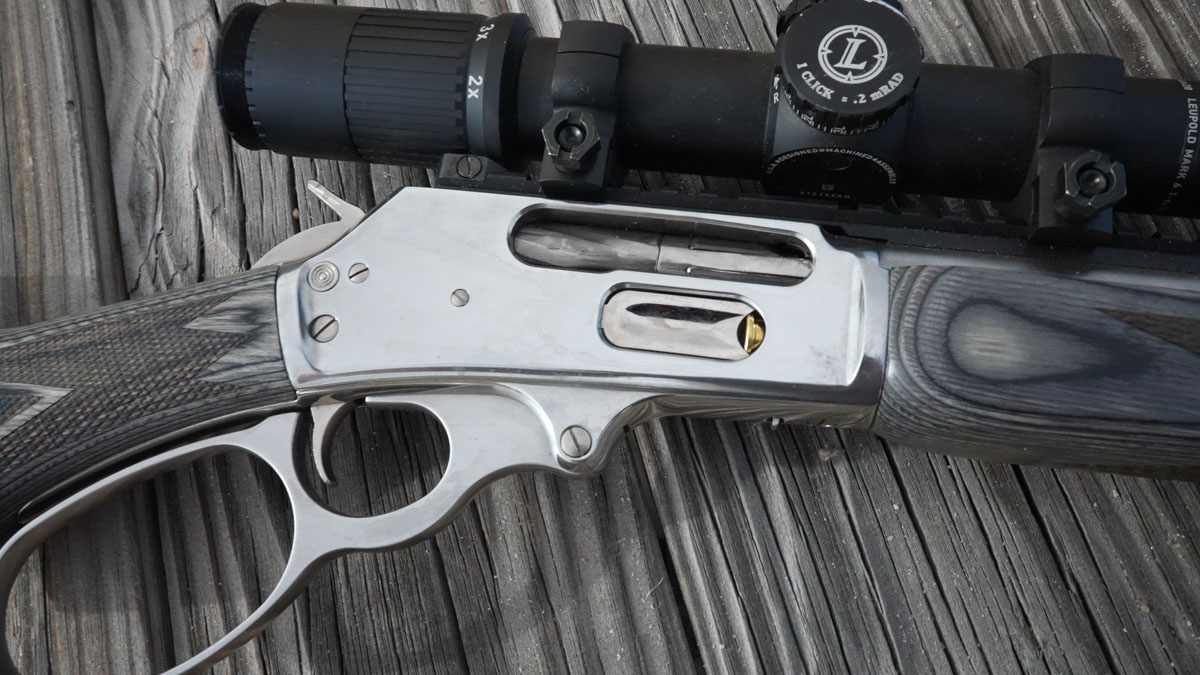
Elegant Laminate Stocks
Marlin did a great job upgrading the stock on the Model 1895 SBL as well. The black and gray color scheme has been featured on Marlin lever guns for many years now, but as with the metalwork the stocks on the new rifles are much improved.
The laser-cut checkering is noticeably more elegant. The diamonds are pointed up nicely, the pattern features more lines per inch compared to my North Haven-made rifles, and the finish on the wood is better. And on the fore-end the cuts that create the diamonds run parallel with the pattern’s border, which is a nice touch and a sign of quality craftsmanship. When checkering was done by hand by stock makers who knew their trade this was standard but, sadly, such attention to detail has become scarce. The checkering on my older factory guns appears clunky by comparison.
The fore-end is slightly trimmer on the new rifles and Marlin has improved the way the wood fits into the metal fore-end tip where the front swivel stud is located. On a couple of my 1895s, for instance, the fore-end measures 1.75 inches at its widest point versus 1.68 inches on the new SBL.
On these rifles Marlin decided to forego grip caps on the stock. Instead, it features a sharp and well-defined laser-engraved image of the Marlin horse and rider logo.
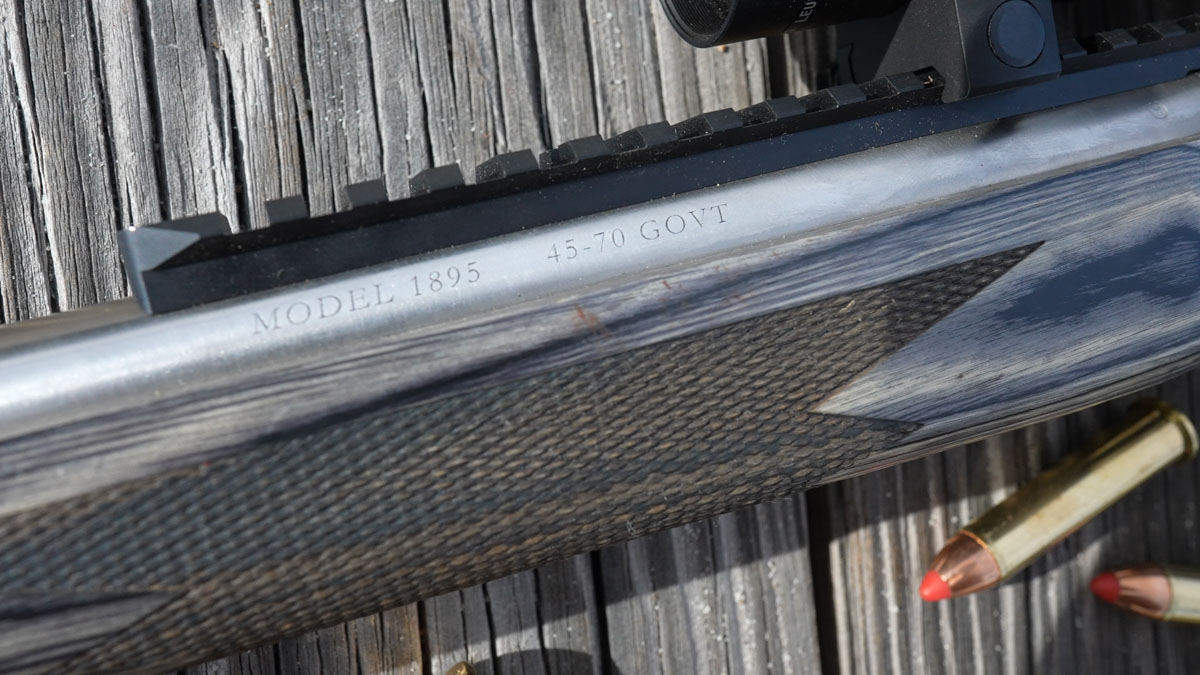
Eliminating Cracked Wood
One frequent complaint about the Remington-made Marlins was that the stocks would chip and crack where they came in contact with the receiver. This was another issue caused by tolerance slop. One way Remington tried to compensate for this was to increase the thickness of the fore-end in an effort to make the wood stronger. They would also put a slave stock on the rifles when they proofed them with over-powered loads because the standard stocks were prone to getting damaged by the stout test rounds.
Marlin says the more exacting fit between the stock and receiver has corrected this issue and as a sign of their confidence with these new 1895s they are proofing them with the stocks they ship with.
Marlin 1895 SBL at the Range
These new Marlins are more than just pretty faces, however. They run as nicely as they look. As part of my evaluation, I put more than half a dozen different .45/70 factory loads through the rifle, including ammo from Hornady, Remington, Federal, Black Hills Ammunition, Barnes, Winchester and Buffalo Bore.
The rifle has cycled them all with no issues whatsoever. For accuracy work, I focused on Hornady’s 325-grain Leverevolution round, which is the load I also used on my aoudad hunt in Texas. Three-shot groups with the rifle hovered around one inch—some slightly smaller, others a tad bigger. For a lever gun this is excellent performance, and I was impressed by the clockwork consistency of the groups. From the rifle’s 19-inch barrel, the bullets exited at 1925 fps.
One challenge while shooting groups was the trigger pull weight of the rifle. I mentioned that the trigger is consistent and crisp—which it is—but the trigger on mine breaks at 6 pounds 7 ounces, which is a bit heavier than I would prefer. On a lever gun like this it would be good to see the trigger break at 5 to 5 ½ pounds.
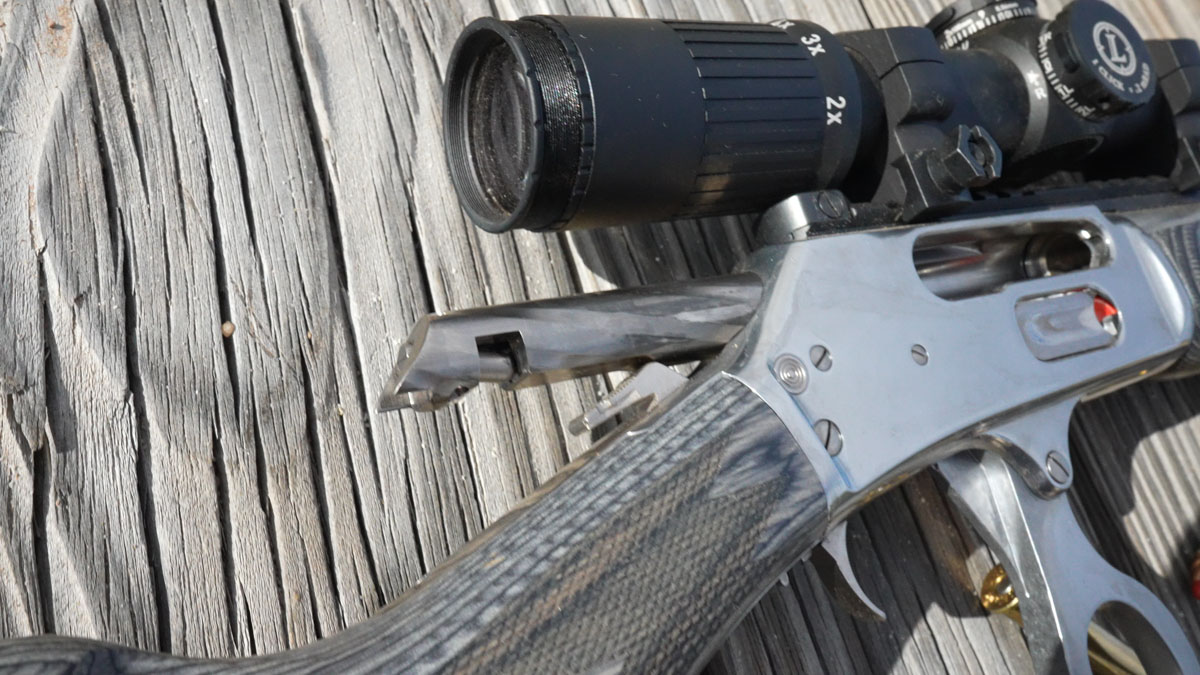
Fast-Handling .45/70
I performed numerous off-hand drills with the rifle as well and liked how it handled. Thanks to its heft—scoped and empty mine weighs 8 pounds 10 ounces—the 1895 SBL manages the recoil of the .45/70 nicely. Ringing steel gongs at 100 yards in quick succession is this Marlin’s happy place. I was able to recover my sight picture quickly and place accurate follow-up shots at a brisk clip. The broad and cushy recoil pad helps with this. It distributes the force of the recoil over a wide surface area and keeps the stock anchored in place on the shoulder.
The finger lever (which is the correct name for the lever loop) is polished with the sharp edges buffed off. It’s extremely comfortable to manipulate with bare hands. There’s no reason to wrap the loop with leather or paracord, unless you really just dig that look. This touch is another testament to how the new Marlin 1895 SBL is being manufactured.
The polishing gives the receiver a bright, shiny look—perhaps not the best finish for stealth in the field, but it is eye-catching. It is possible to have too much of a good thing, however, and the receiver on my rifle was over-polished and rounded out the lines on the flats of the sides. As the Marlin workers gain experience with the process, I’m sure they will figure out how to polish the metal without losing the definition of metal.
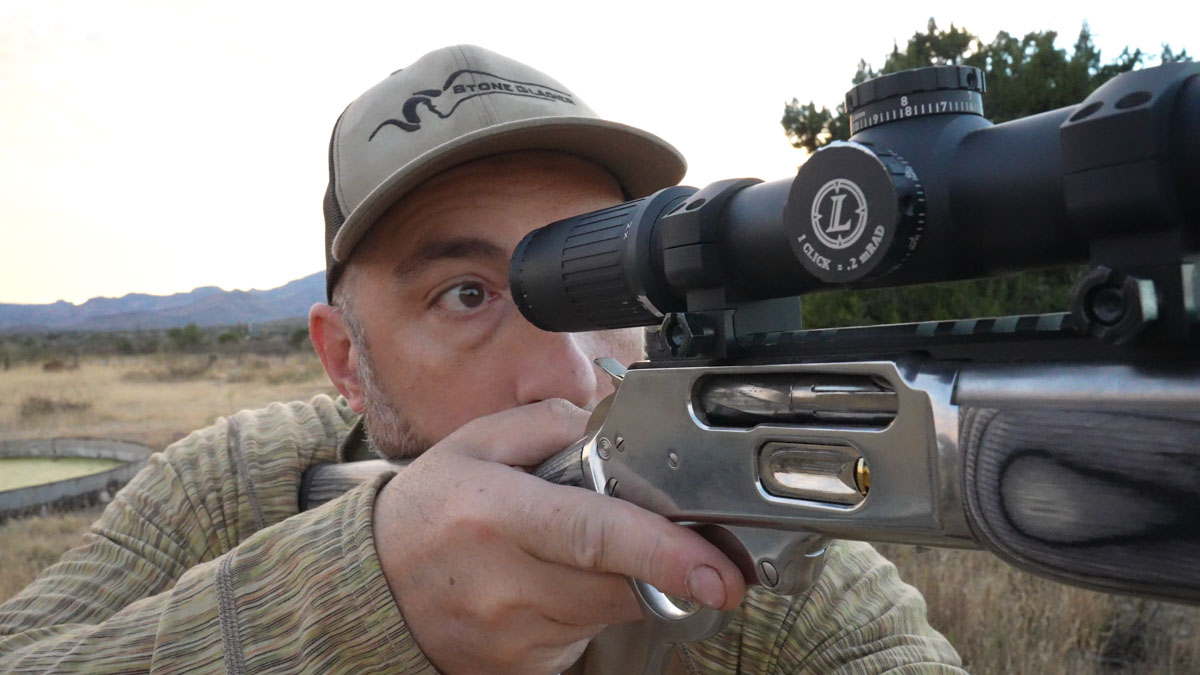
Leupold Mark 6 1-6×20: An Ideal Optic for the Model 1895
For hunting in thick timber and brush, the rifle’s ghost ring sights are an excellent option, but I was taking the Marlin to west Texas to hunt aoudad near the Chinati Mountains. This is open, steep country and longer shots come with the territory.
To get the most potential out of the lever gun—I’m talking 300 yards and in—I mounted a Leupold Mark 6 1-6×20 on the rifle’s picatinny rail. This is a first focal plane scope with Leupold’s TMR-D reticle. It comes with low-profile locking windage and elevation turrets that adjust in .2 mil increments.
The hash marks in the reticle are spaced at .5 mil intervals, which balances well with the scope’s magnification range. Any finer and the shooter wouldn’t be able to distinguish the marks. Right around the intersection of the crosshairs is a bold ring that gives the shooter a useful aiming reference for when the scope is dialed to 1X. Cranked up to 5X or more, the shooter can see through the ring and use the .1 mil-dot that floats in the center of the crosshairs for precise shot placement.
Given the rainbow trajectory of the .45/70 Gov’t, even with Hornady’s pointed Leverevolution bullets, I wanted to be able to leverage the utility of this scope if needed. I loaded the ballistic information into my binocular—the Vortex Fury 5000 AB—so that after I pinged a target, the elevation correction would be displayed in my field of view. At 200 yards, that translated to about 1.5 mils of drop, at 250 yards it was 2.5 mils, and at 300 yards it was 3.6 mils. Flat shooting it ain’t.

Hunting with the Marlin 1895 SBL
As it turned out I didn’t need to take a longer poke. One the second day of the hunt, my guide and I spotted a pair of nice rams a touch over 1,200 yards from the vantage where we positioned ourselves at first light. We stalked across the broken, rocky ground to get closer, keeping low when possible. I divided my focus between the animals and the endless variety of thorny plants that sought to poke and grab me at each step.
Moving through one last tenacious patch of cat’s claw, we managed to get within about 100 yards of the animals. I didn’t need to bother with a range at such close quarters and when one of the big rams stepped into the clear, I put a bullet into his ribcage. He wheeled toward us and I quickly put two more shots into him and he dropped. The 325-grain FTX bullets are thumpers.
What’s Next From Marlin
Marlin picked the Model 1895 SBL for its debut for two simple reasons. One, it is a sexy looking rifle. Two, it was the top seller when the company was owned by Remington. Very soon, however, you can expect to see more offerings from the Ruger-Marlin crew.
The company is being tight-lipped about this, but it is safe to say that in 2022 we’ll see blued metal on these rifles as well as walnut stocks. You can also expect the return of the Marlin Model 1894 as well as the Marlin Model 336.
Read Next: What is the Best Deer Hunting Caliber?
If I were a betting man, I’d say we’ll see 1894s chambered in .38 Special/.357 Rem. Mag., and .44 Special/.44 Rem. Mag. And I’d be shocked if the first chambering of the relaunched Model 336 is anything other than .30/30 Winchester.
Without a doubt this is great news, not just for the fans of Marlin, but for all hunters and shooters. We lost a lot of great brands thanks to the mismanagement of Marlin’s previous owners. Para-Ordnance, H&R, Dakota, and DPMS have all fallen by the wayside—though there’s a faint glimmer of hope for the last two. We’re fortunate that Ruger stepped in to prevent the same fate from befalling Marlin. And even more lucky that they are building such rock-solid rifles bearing the Marlin name. Now, if only they’d bring back the Model 336 in .35 Remington…then I, for one, would feel that Marlin’s comeback is complete.


